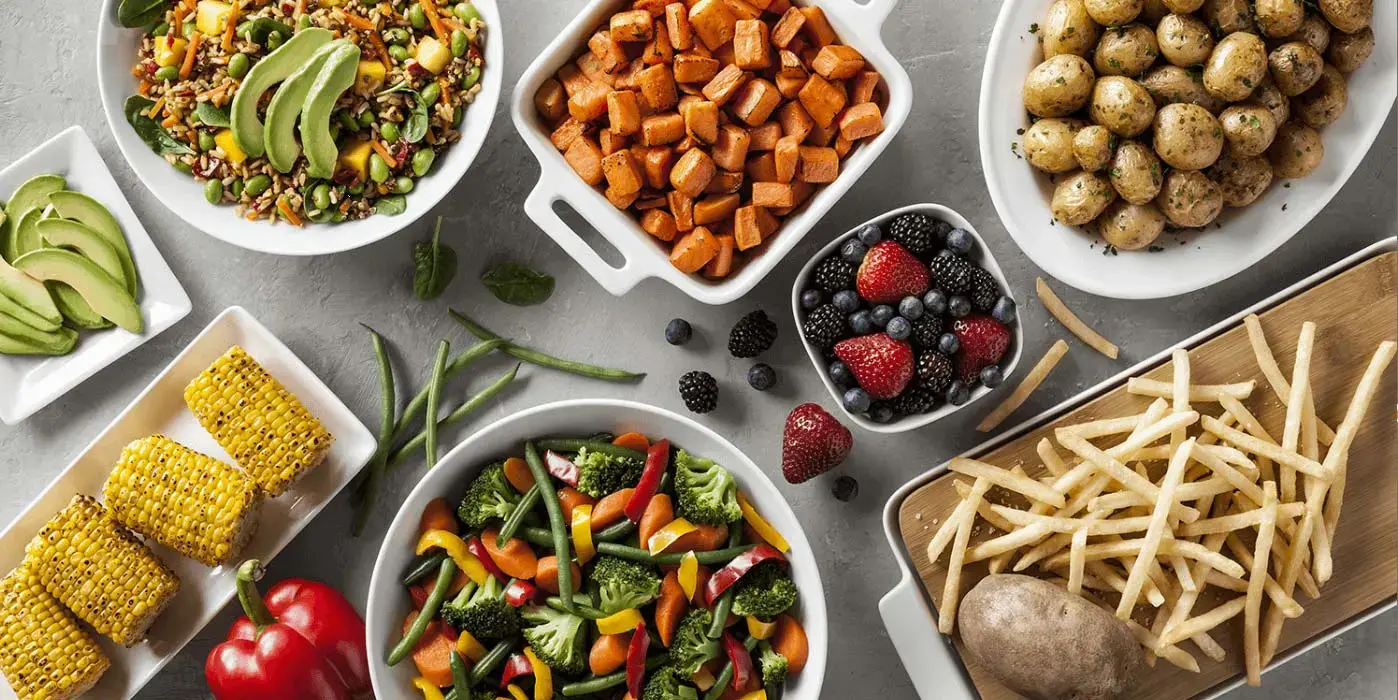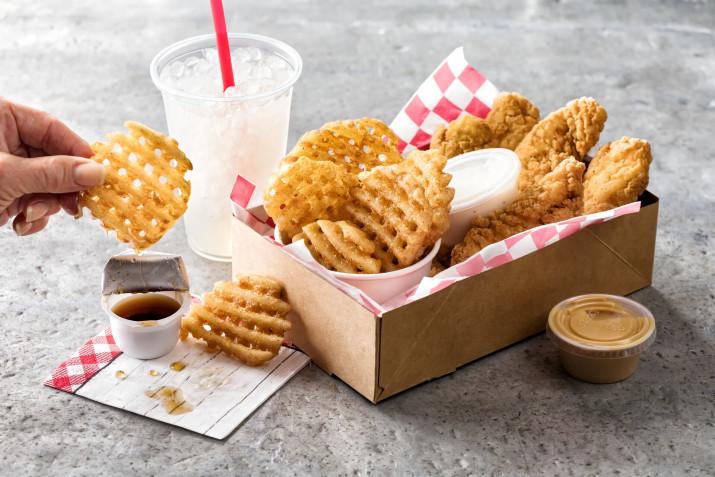Tendencias alimentarias
En tendencia: cuando un restaurante es más que un restaurante
5/29/2023

Los valores personales y sociales están dando forma a las elecciones de los consumidores al salir a comer
¿Eres conocido por ser el líder de los nuevos alimentos/sabores? ¿Te diriges a la generación X o a los baby boomers? ¿A los millenials? ¿Y qué hay de tu responsabilidad social? ¿Y qué hay de la población en su conjunto, que está cambiando sus expectativas de que el lugar donde gasta su dinero refleje sus valores?
No importa cómo veas el perfil de tu restaurante, los cambios en las tendencias de las clases sociales influirán en lo que tus clientes quieren (y buscarán en tus competidores) y te ofrecerán formas de renovar tu menú y perfeccionar tu reputación. Estas son algunas maneras en que los restaurantes pueden introducirse en las tendencias que no solo están dando forma a las expectativas alimentarias, sino también a la sociedad en general.
Tendencia alimentaria: Jóvenes y no tan jóvenes, los consumidores quieren personalización
En la película, “Cuando Harry conoció a Sally”, Sally básicamente pregunta, después de hacer un pedido de restaurante confuso, “¿Por qué no me lo pueden traer como yo quiero?” ¡Esto es así para el consumidor de hoy! Quieren lo que quieren, cuando lo quieren. Un sorprendente 73 % de los comensales desea algún nivel de personalización en sus elecciones alimenticias.
- El 67 % prefiere personalizar su pizza
- El 75 % prefiere personalizar su burrito
- El 64 % prefiere personalizar su plato de pasta
¿Qué diferencia a estos personalizadores de los que eligen opciones preestablecidas? Hay beneficios para ambos, dependiendo de los valores de tus clientes:
Los devotos de lo personalizado prefieren que todo esté incluido (69 %), que se haga fresco en el momento (49 %), que sea bueno para las restricciones dietéticas (49 %) y que se haga solo para ellos, desde cero (31 %). No les importa esperar; el 93 % dice que está dispuesto a esperar más tiempo por comida personalizada y tampoco les importa pagar más, ya que el 68 % dice que está dispuesto a pagar extra por comida personalizada.2
Los que eligen opciones preestablecidas tienen un conjunto de valores diferente. Les gusta que las opciones preestablecidas signifiquen rapidez y conveniencia (79 %), y que el restaurante conozca las mejores combinaciones (62 %). Son demasiado indecisos para personalizar su comida (34 %) y no están seguros de cuáles son las buenas combinaciones (18 %).
Ese es el estado actual de la personalización, y es posible que ya ofrezcas personalización de alguna manera, pero ¿a dónde va esta tendencia? Probablemente aún no ofrezcas estas personalizaciones:
- Coberturas personalizadas para ensalada (no solo aderezo)
- Sustituciones de acompañamientos de entrada (piensa en Pick 2 at Panera)
- Tamaño de porción personalizado (más allá del filete de 6 u 8 onzas)
- Sustituciones de ingredientes de bebidas (¿puedes hacer un batido sin azúcar?)
- Adiciones extra a las bebidas (proteínas, saborizantes, especias y hierbas)
Por supuesto, hay desventajas en toda esta personalización cuando se trata de tu resultado final.
- Mayor tiempo de espera (que, los clientes dicen que no les molesta, pero...).
- Aumenta el costo de los artículos (¡mira el primer punto!).
- Preocupación por la mala calidad, con menor capacidad para estandarizar el plato.
- Los artículos no siempre se personalizan correctamente.
Aun así, los consumidores exigen mayores oportunidades para obtener lo que desean por el dinero gastado en sus alimentos.
Tendencia de valores: La responsabilidad social afecta al segmento de restaurantesSer parte de tu comunidad no es algo nuevo, ya que los restaurantes, grandes y pequeños, de cadenas e independientes, han estado exhibiendo con orgullo placas de apoyo al equipo local de softball o a la estación de bomberos durante décadas. Sin embargo, lo nuevo es la sensación de que las empresas deben hacer más, asumir un rol de mayor responsabilidad social con transparencia.
Tomemos como ejemplo a Pret a Manger, un restaurante rápido informal que ofrece café orgánico y comida natural, y patrocina The Pret Foundation. Los trabajadores de Pret recogen toda la comida que queda sin vender al final de cada día y la donan, a través de la Fundación Pret, a los necesitados, en colaboración con bancos de alimentos y refugios locales. Esta misión es parte de la reconocida reputación de la cadena de restaurantes de 450 ubicaciones por “Comida saludable, haciendo el bien” (Good food, doing good).
Los consumidores más jóvenes son grandes partidarios de estas causas filantrópicas, con un 84 % a favor, en comparación con el 76 % de las generaciones mayores.3
Y aquí es donde surge tu oportunidad: el 57 % de los consumidores dice no haber sabido de un restaurante que apoye una causa social.4 Sin embargo, cuando los consumidores reconocen un restaurante que se alinea con sus valores, incluso cuando creen que podría haber mejor comida en otro lugar, el 61 % comprará comida en ese restaurante de todas formas, y el 24 % de ellos lo recomendará a otros.5
Incorporar tus valores sociales en tu marca es un paso que deberías considerar cuidadosamente, ya que no todos piensan que los restaurantes deben ser tan explícitos y orgullosos al declarar sus valores sociales:6
- El 34 % de todos, excepto los baby boomers, cree que los restaurantes deben al menos dar a conocer bien sus valores sociales.
- El 30 %, el más alto entre los consumidores más jóvenes, piensa que los restaurantes deben donar a causas, pero no darlo a conocer y mantener un perfil bajo.
- El 36 %, la mayoría entre la generación X (de 37 a 53 años) y los baby boomers, cree que los restaurantes deberían limitarse a servir buena comida.
Hazs lo que hagas, sé transparente, sé auténtico. Lamentablemente, nuestra investigación muestra que el 75 % de los consumidores no cree que los esfuerzos benéficos declarados por las grandes compañías gastronómicas sean confiables. Y aunque esta afirmación no se refiere a los restaurantes, sí recuerda la necesidad de un compromiso sincero.
1, 2, 3, 4, 5, 6 Datassentials Report: Personal Values & Generations (Valores personales y generaciones)
- Beneficios de lo congelado
- Colegio y universidad
- Delicatesen
- Desde la cocina de prueba
- Entrega
- Festividades
- Historias de cocina
- K-12
- Mano de obra y personal
- Mercadeo
- Minorista
- Noticias
- Papas a la francesa
- Planificación de menú
- Productos nuevos
- Recursos sobre la Covid-19
- Restaurante de servicio completo
- Restaurante de servicio limitado
- Sostenibilidad
- Tendencias alimentarias
- Trend Feast
- Vegetales



